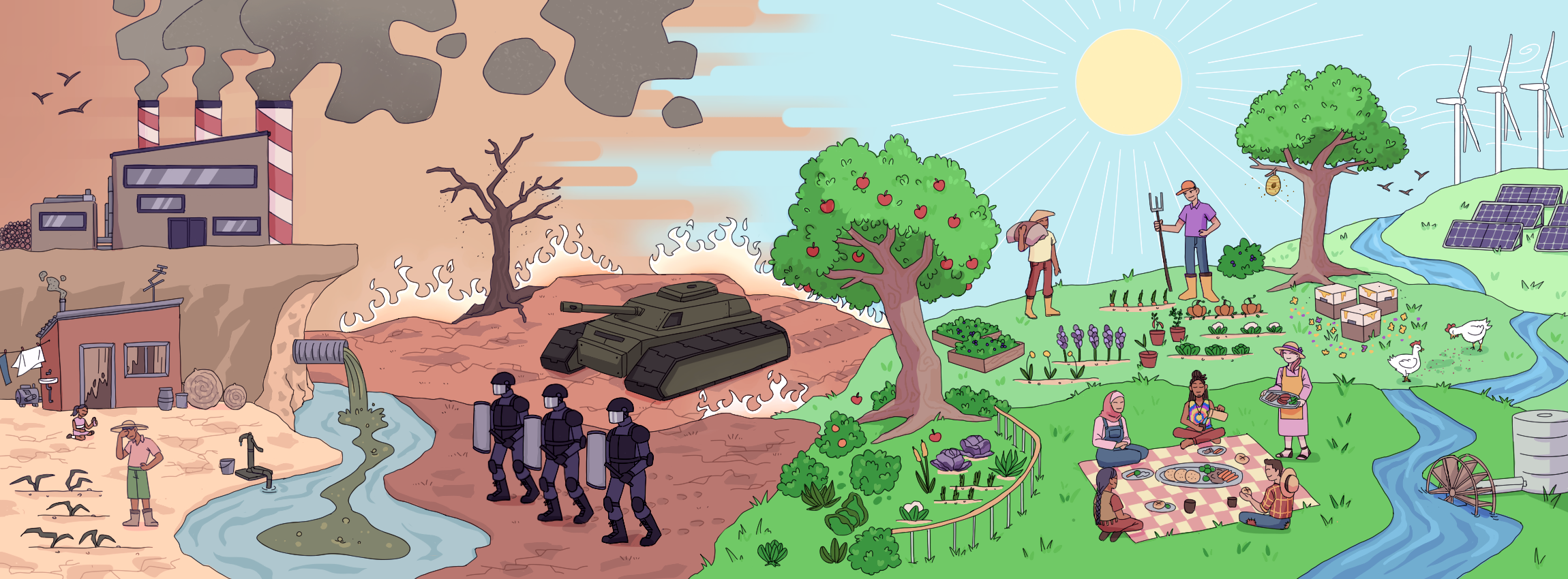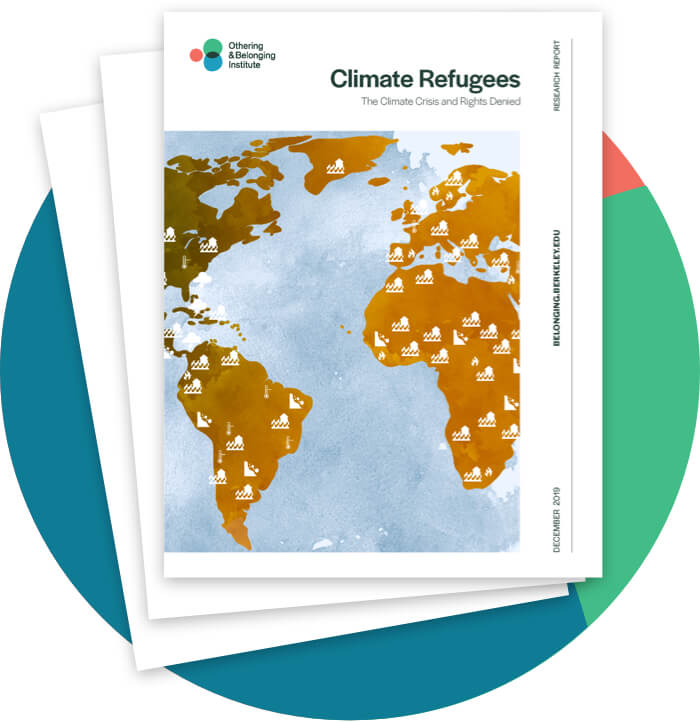Antigua and Barbuda
Introduction to Antigua and Barbuda
Antigua and Barbuda, a small Caribbean island nation situated north of Venezuela, has a population of 94,000,1
of which 76% is rural.2
A twin-island state composed of its two main namesake islands, Antigua and Barbuda is among the smallest countries in the world. Due to its small size, the country has a uniform tropical rainforest climate across its islands.3
The country is considered a Small Island Developing State (SIDS) primarily comprised of low-lying coastal zones, making it extremely vulnerable to climate change impacts including sea level rise and extreme weather events like tropical storms and hurricanes.4
The capital city, Saint John, houses around 26% of the population and many of the country’s critical economic and political infrastructure, threatening existing and future coastal developments.5
The services sector contributes to 67.8% of GDP, followed by the industry and agriculture sectors at 19.4% and 1.9%, respectively.6
The country is predominantly of African descent at 87.3% of the population, with smaller communities of mixed, Hispanic, and White individuals making up the rest.7
Mapping Major Climate Events and Climate-Induced Displacement
Antigua and Barbuda is highly vulnerable to the effects of the climate crisis, being considered among the world's top four most vulnerable countries.8 Due to its location on the “hurricane belt” and its low-lying coastlines, the country is especially vulnerable to sea level rise, rising temperatures, and irregular precipitation patterns.9 Between 1950 and 2014, the country witnessed over 503 disasters that directly affected 33,874 people and indirectly affected another 2.18 million.10 One of the worst years for the country was in 2017, when Hurricanes Irma, Jose, and Maria hit especially hard, causing 1.5% of its population—1,400 people—to be displaced and over 81% of buildings and infrastructure to be destroyed.11 This sudden disaster caused a third of the country to become inhabitable and thousands of individuals to evacuate from Barbuda to Antigua, putting immense stress on the people and existing infrastructure and resources on the island.12 The country faces a 33% chance of at least one hurricane affecting it annually,13 and under a mid-range climate change scenario, cyclones that hit Antigua and Barbuda are expected to become more intense with an increase in wind speed of 2-11%.14 Future projections show that the country may experience an estimated 3,366 displacements annually due to such extreme weather events and trends.15 The country is also becoming drier, with a 45.1% probability of at least one drought occuring in a year, and a 15.1% probability of a severe drought occuring in a year.16 This makes Antigua and Barbuda one of the most water-stressed countries in the Caribbean. For example, in 2014 Potworks Dam was only 10% full, which had enormous implications because it is the largest reservoir in the Caribbean and supplies Antigua’s drinking water and holds two-thirds of the entire island’s water supply.17 By 2015, this resulted in the country’s desalinated water consumption rising from 60% to over 90%.13
Mapping the Costs of the Climate Crisis
The GDP of Antigua and Barbuda is $2.03 billion,18 while the GDP per capita is $21,787.19 Although the country is small and developing, it has a relatively high standard of living and a high human development rating that is heavily dependent on the tourism industry,20 which currently accounts for 80% of GDP and 70% of all employment.21 This reliance makes tourism a single-point failure for the country that can be exposed to the coming impacts of the climate crisis.With a higher frequency of coastal erosion, increased rainfall, hurricanes, and natural disasters, there will likely be reduced numbers of visitors and more significant damage to key tourist infrastructure, ultimately resulting in a substantial economic loss.22 When looking at the direct damages of past natural disasters, Hurricane Irma and Hurricane Maria caused nearly $136.1 million in direct damages, while estimated recovery costs are well above $220 million.13 Droughts also have a massive impact on the agricultural sector, as hotter temperatures are drying up the surface and groundwater catchments, hurting crop yields and livestock farming—an industry worth nearly $40 million.23
Mapping Resilience and Mitigation Pathways
Despite being responsible for less than 0.01% of global GHG emissions, Antigua and Barbuda is still among one of the most vulnerable to the effects of the climate crisis.24 On a domestic level, the country’s NDC sees the transition to a clean, fossil fuel economy as one of its main priorities. By 2030, Antigua and Barbuda aims to reach 86% renewable energy generation in the electricity sector and to have 100% of all new vehicle sales be electric.25 Beyond 2030, the twin-island state wants to see a complete phase-out of fossil fuel use in the power sector, a continued increase in storage capacity, and the possible development of dispatchable renewable electricity generation.26 By 2030, with the necessary resources and funding from other international actors, they aim to protect all domestic waterways from the risk of flooding and health impacts while providing a unique, affordable insurance plan for farmers, fishers, and business owners who will face losses from the climate crisis.27 By 2050, seawater desalination capacity will also be 50% greater than 2015.15 The country is also a key advocate for international climate action, holding the SIDS seat on the Green Climate Fund (GCF) Board and a chair position in the Alliance of Small Island States (AOSIS).28 The country is also heavily involved in the international debt-for-climate swaps program, which allows creditor nations to write off or discount their national debt and direct these payments to fund climate action initiatives.29
Necessary Changes
Although Antigua and Barbuda has already taken several preemptive measures to address the climate crisis, it must continue to identify and implement new adaptations in the future. These include cutting emissions where possible, such as in the energy and land use, land-use change, and forestry (LULUCF) sectors, as they account for 76% and 22% of total emissions.30 Since the tourism industry is vital to the country’s economy, adaptations must be made to sustainable tourism initiatives. This includes developing new climate-resilient infrastructure like hurricane-resistant hotels and better drainage systems, conducting eco-tourism activities like hiking and birdwatching, and strengthening and preparing early warning systems for disasters.31 The country also needs a more unified governmental front, as the transportation, household, agriculture, and social services departments do not have a tangible agreement that defines specific roles and responsibilities between health and climate change policy.13 However, Antigua and Barbuda may face severe challenges securing resources and funding because it is classified as a SIDS. A SIDS not only has limited annual tax revenue but is also limited by human, technical, and infrastructural resources that prevent it from fully implementing its mitigation and adaptation strategies.30 It is estimated that it will cost the twin-island state between $1 to $1.7 billion for its mitigation and adaptation actions to be fully implemented.32
Citations
- 1“Population, total – Antigua and Barbuda,” The World Bank, February 8, 2025,
https://data.worldbank.org/indicator/SP.POP.TOTL?locations=AG. - 2 Rural Population, total – Antigua and Barbuda,” The World Bank, accessed February 8, 2025,
https://data.worldbank.org/indicator/SP.RUR.TOTL.ZS?locations=AG. - 3 “Climate Change Knowledge Portal – Antigua and Barbuda,” The World Bank, accessed February 8, 2025,
https://climateknowledgeportal.worldbank.org/country/antigua-and-barbuda. - 4“Antigua and Barbuda Country Profile,” Climahealth, accessed February 9, 2025,
https://climahealth.info/country/antigua-and-barbuda/. - 5“Antigua and Barbuda,” PAHO, accessed February 9, 2025,
https://www.paho.org/en/antigua-and-barbuda#:~:text=Antigua%20and%20Bar…. - 6“Antigua and Barbuda - The World Factbook,” CIA, accessed February 9, 2025,
https://www.cia.gov/the-world-factbook/countries/antigua-and-barbuda/. - 7Ibid (i)
- 8“Migration, Environment, Disaster and Climate Change Data in the Eastern Caribbean: Antigua and Barbuda Country Analysis,” University of Groningen, accessed February 9, 2025,
https://research.rug.nl/en/publications/migration-environment-disaster-…. - 9 “Climate Change Knowledge Portal – Antigua and Barbuda,” The World Bank.
- 10“Antigua and Barbuda Country Analysis,” IOM, accessed February 10, 2025,
https://publications.iom.int/system/files/pdf/MECC-Antigua-and-Barbuda-…. - 11Ibid (ii)
- 12“Fighting for Survival: Four small islands on the frontline of climate change,” ReliefWeb, accessed February 10, 2025,
https://reliefweb.int/report/antigua-and-barbuda/fighting-survival-four…. - 13 a b c d “Antigua and Barbuda Country Profile,” Climahealth.
- 14Ibid (iii)
- 15 a b Ibid (iiii)
- 16 “Antigua and Barbuda Country Profile,” Climahealth.
- 17“Potworks Reservoir,” Antigua Nice, accessed February 10, 2025,
https://www.antiguanice.com/client.php?id=446#:~:text=This%20expanse%20…. - 18“GDP (current US$) - Antigua and Barbuda,” The World Bank, accessed February 11, 2025,
https://data.worldbank.org/indicator/NY.GDP.MKTP.CD?locations=AG. - 19 “GDP per capita (current US$) - Antigua and Barbuda,” The World Bank, accessed February 11, 2025,
https://data.worldbank.org/indicator/NY.GDP.PCAP.CD?locations=AG. - 20“Antigua and Barbuda country profile,” BBC, accessed February 11, 2025,
https://www.bbc.com/news/world-latin-america-18706079#:~:text=Antigua%2…. - 21“Antigua and Barbuda Country Gender Scorecard,” The World Bank, accessed February 11, 2025,
https://documents1.worldbank.org/curated/en/822421645769028203/pdf/Anti…. - 22“Climate Change Knowledge Portal – Antigua and Barbuda,” The World Bank.
- 23“Antigua And Barbuda - Agriculture, Value Added,” Trading Economics, accessed February 11, 2025,
https://tradingeconomics.com/antigua-and-barbuda/agriculture-value-adde…. - 24“Greenhouse Gas Emissions in Antigua and Barbuda,” Emission Index, accessed February 11, 2025,
https://www.emission-index.com/countries/antigua-and-barbuda. - 25“IGES NDC Database,” Institute for Global Environmental Strategies, accessed February 11, 2025,
https://www.iges.or.jp/en/pub/iges-indc-ndc-database/en - 26“Antigua and Barbuda's national greenhouse gas reduction report,” Climate Analytics, accessed February 11, 2025,
https://climateanalytics.org/publications/antigua-and-barbudas-national…. - 27“Antigua and Barbuda’s First Biennial Update Report,” UNFCCC, accessed February 11, 2025,
https://unfccc.int/sites/default/files/resource/Antigua%20and%20Barbuda… - 28“Navigating climate finance as a small island state: Lessons from Antigua and Barbuda,” Commonwealth Secretariat, accessed February 11, 2025,
https://www.preventionweb.net/news/navigating-climate-finance-small-isl…. - 29Ibid (V)
- 30 a b “Antigua and Barbuda’s First Biennial Update Report,” UNFCCC.
- 31“Antigua Green Tourism Initiatives Leading the Way to Eco-Friendly Travel,” Book Antigua, accessed February 11, 2025,
https://bookantigua.travel/antigua-green-tourism/#:~:text=The%20festiva…. - 32“Antigua and Barbdua Updated Nationally Determined Contribution,” UNFCCC, accessed February 11, 2025,
https://unfccc.int/sites/default/files/NDC/2022-06/ATG%20-%20UNFCCC%20N….


